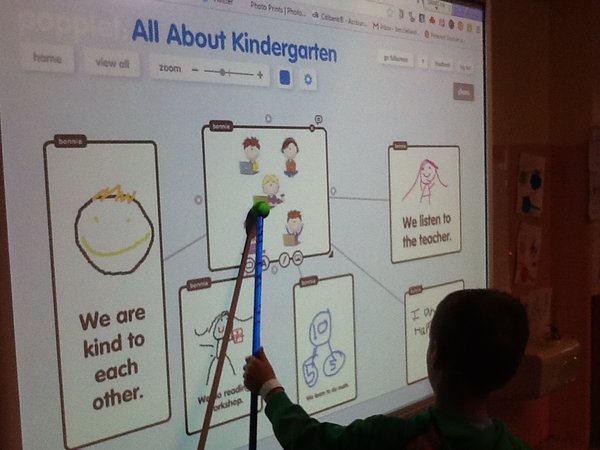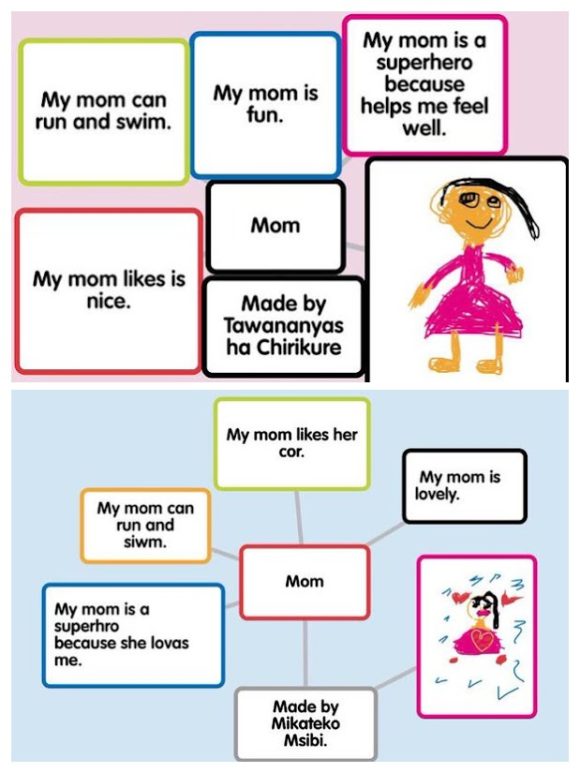Are you back to school or college yet? Maybe you never went away – depends where you are in the world. Anyway, if you are returning from a well-earned break, it’s now time to shake off the summer holiday routine and get back into the school work rhythm. A painful process for some, but you’ll be raring to go in no time and Popplet might just be able to help.

Learners often find themselves with new classmates at this time of year: going to a new school, moving onto college from school, beginning to study new subjects… and this is a good thing. Differing relationships is important as we grow and learn from each other. However, making friends with your new learning buddies can take time, so for teachers, it’s a good idea to have a few “icebreakers” on hand at the start of the academic year. Here are a few simple Popplet activities that will help new classmates get to know each other quickly.
Getting to Know You: The Self Popplet
Popplet lets students add information to create informative and imaginative visuals. A good activity to begin the new school term, when not everyone in a class or group may know each other, is to have students create popplets about themselves and compare them in a mingle activity with their classmates. Have a look at this Popplet from 5th-grader Heather:
Depending on the age or level of the students, you can create a list of set questions and ask them to include as much information as they can in their Popplets. After which, students mingle, asking each other about their lives and showing off their newly created Popplets. When everyone is fully acquainted, you can then ask them to share what they know about each other as a class by asking questions individually, for example:
Sally, who do you know in the class who has a pet?
Mike, who in the class went to the beach this summer?
Katey, whose Grandfather lives in a different country?
(Make sure you look at your student’s work before you attempt this part of the activity.)
This activity is practically guaranteed to produce a lot of conversation and the students will be on the best of terms (or not!) by break time. They will certainly know each other a lot better.
Who Do You Love or Admire?
Everybody loves somebody: Kindergarteners tend to love their Moms, tenth-graders tend to love their music or film heroes. Either way, asking this question and students creating a popplet as an answer is a good way to get learners using technology and interacting. The title and the content of the activity should be adapted specifically to the age-group of the students. This will also influence how learners use Popplet. For example, Kindergarteners usually choose the Drawing Tool to tell us about their Moms:

Whereas teenagers might use images and video:
Whatever your students choose to create, their popplets will provide ample opportunities for discussion, even with the youngest group members.
My Summer Holiday Popplet
Asking students to create Popplets about their summer holidays is another popular activity. Questions like:
Where did you go?
Who did you go with?
Where did you stay?
There are many questions students can ask each other. If your students are old enough, they can set their own questions. Or, depending on your learning outcomes, create a list of set questions. A lot depends on who your learners are, and their needs.
This type of exercise can also be rich in pedagogical material and teachers frequently use activities of this type, basing them on distinct learning outcomes. Some examples from the Summer Holiday popplet:
- Where did you go on holiday?: Geography
- How was it different from your last holiday? Comparing and contrasting.
- What was the food like? Cultural differences, vocabulary.
- What was the weather like?: Weather, adjectives, adverbs.
- What did you do? Discussion on likes and dislikes, hobbies…
- English language learners can study the grammar of the past as well as holiday vocabulary.
Class Rules: A Brainstorming Activity
All functioning communities need rules or principles for their members to follow; schools and colleges do too. All children, a lot of teenagers, and a few adults need help when it comes to knowing how to behave in certain situations. Often rules are broken unwittingly so creating a list of the most important information that students need to follow helps to create a healthy, efficient learning environment. This works even better if the students are involved in the process. The perfect way to start with a new group. Here’s how:
- Begin by forming small groups of around 4-6 students – be prudent about how you form the groups, remember your students are creating the class rules!
- Next, depending on the number of devices available, ask the students to elect someone responsible for creating the popplet – if you have 1-1 devices, all of the students in the group can contribute independently if they are added to the popplet as collaborators with editing permissions. This could get a bit messy and you may need to experiment depending on the age and level of organizational skills of the students.
- When the groups and the devices are set and all is in order, the students brainstorm ideas about what is and what isn’t good for the class, with the focus on common positive and negative behaviors: being on time, helping others…
- Once the students have made a beginning, allow them time to come up with more ideas. Keep monitoring.
- Now that the students have the information on their popplets, they can do a little tidying and editing. If they have too many rules, you might want to ask them to prioritize.
- Finally, when they are finished or after about 30–45 minutes, each group can present their Popplet to the class.
- Popplets can be saved and printed off in paper form. This is something you could have each group do. Alternatively, you could create a popplet containing the most pertinent information from the brainstorming session and distribute it to students and hang it on the classroom wall.
You can get to know Popplet and the Popplet community better by signing up for a free Popplet account on the Popplet Homepage. Get to know us all really well by following Popplet on Twitter and on our Facebook page.